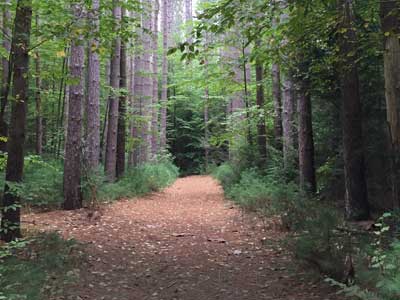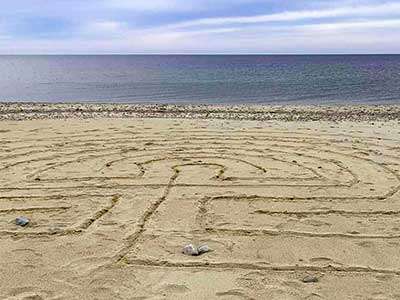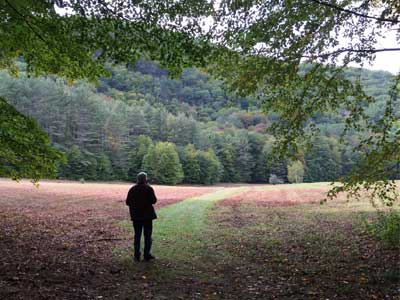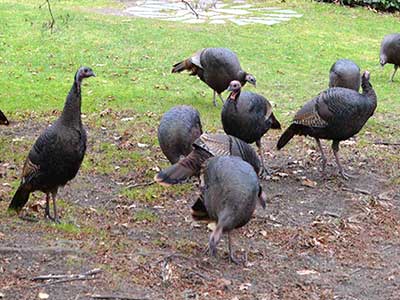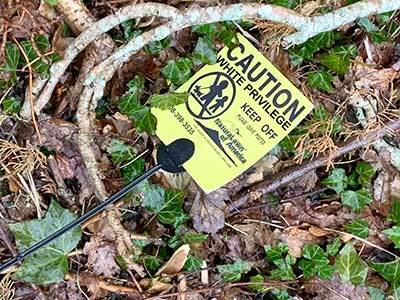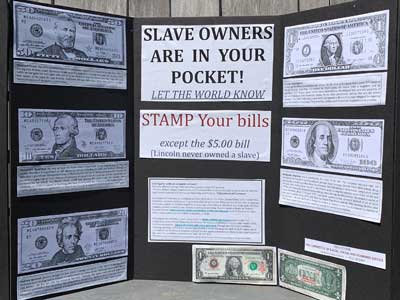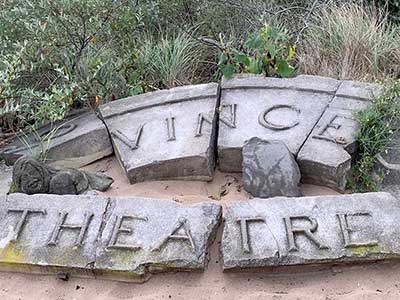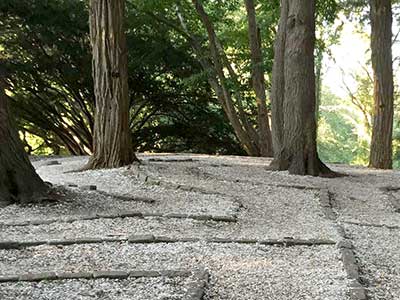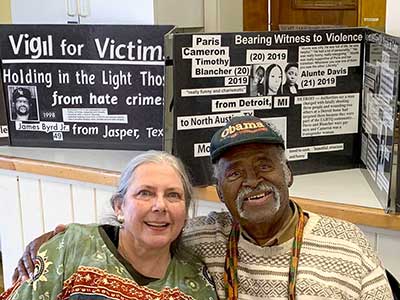by Christoph Strobel | February 2022
The essay explores the often-ignored histories of the indigenous people who resided on the confluence of the Merrimack and the Concord rivers up to the 1650s. This place is characterized by a significant bend in the Merrimack River as it changes its southerly flow into an easterly direction. Today, the area includes the modern city of Lowell, Massachusetts, and its surroundings. While the 1650s saw the creation of a Native American “praying town” and the incorporation of the Massachusetts Bay Colony’s towns of Chelmsford and Billerica, it is the diverse and complex indigenous past before this decade which North American and global historians tend to neglect. The pre-colonial and early colonial eras, and how observers have described these periods, have shaped the way we understand history today. This essay problematizes terminology, looks at how amateur historians of the 19th and early 20th centuries have shaped popular perceptions of Native Americans, and explores how researchers have told the history before the 1650s. The materials available to reconstruct the history of the region’s Native Americans are often hard to find, a common issue for researchers who attempt to study the history of indigenous peoples before 1500. Thus, the essay pays special attention to how incomplete primary sources as well as archeological and ethnohistorical evidence have shaped interpretations of this history and how these intellectual processes have aided in the construction of this past.
TAGS: [Strategies] [2020’s] [Indigenous] [History] [Systemic Racism] [Implicit Bias] [Myths] [Politics] [Slavery] [White Supremacy] [White Culture] [Silencing POC] [Health Disparities] [Economics]
Resource Links Tagged with "History"
Anti-Racism is about Social Responsibility, Not Racial Guilt; Allyship is a Journey, and Shame Has Never Been the Destination
by Tim Wise | November 2021
Worried that racial justice activism might embolden progressives pushing for meaningful equity initiatives in policing, the workplace, and elsewhere, conservatives latched on to this strategy — attacking classroom discussions of racism as “indoctrination” — so as to limit awareness of racial injustice among youth, energized by last summer’s events. The right claims anti-racist curriculum is about guilt-tripping white students. One of the primary weapons in the rhetorical arsenal of this advancing army has been the claim that anti-racist curriculum seeks to make white children feel guilt and shame because of their skin color.
TAGS: [Individual Change] [2020’s] [Anti-Racism] [White Supremacy] [White Culture] [White Privilege] [Social Justice] [Policing] [Employment] [White Fragility/Tears] [History] [Teachers] [Systemic Racism] [Slavery] [Black Lives Matter] [Indigenous] [Advocacy][CRT]
The Inspirational Story of Horace King: Highly Respected Engineer Horace King is one ofLagrange’s Most Inspirational Historical Figures; Raised as an Enslaved Person, King Died A Free Man and Highly Respected Engineer
by Visit LaGrange Georgia | Date Unknown
Horace King was born in 1807 in South Carolina. Unlike most enslaved persons, he was taught to read and write at a young age. By adulthood, he’d become a competent builder. It’s unclear how he learned the lattice truss design he used for building bridges, but it may have occurred when the lattice truss Pee Dee River Bridge was built near his home. Around 1830, King was purchased by contractor John Godwin. Godwin took King with him to build a bridge over the Chattahoochee River and the pair began working on construction projects throughout the South. In the mid-1830s, Godwin sent King to Oberlin College in Ohio, the first college to admit African Americans. Following his education, King returned to work with Godwin, building courthouses and bridges throughout Georgia and Alabama. In 1841, they rebuilt their Columbus City Bridge which had been destroyed in a flood. Godwin experienced financial difficulty in the late 1830s and transferred ownership of King to his wife and her uncle, possibly to protect King from being taken by creditors. King was permitted to marry a free woman, Frances Gould Thomas, which was a rare allowance within states practicing the enslavement of people.
TAGS: [Assumptions] [History] [Slavery] [Role Model] [Politics] [Civil War] [Systemic Racism] [Black Lives Matter]
America’s Gun Obsession is Rooted in Slavery; A Series of Slave Revolts Terrified White Residents and Helped Fuel the Rationale for Gun Ownership
by Carol Anderson | June 2021
For too long, the second amendment has been portrayed with a founding fathers aura swaddled in the stars and stripes. But “a well-regulated militia” wasn’t, as the story goes, about how valiant and effective the militias were in repelling the British. George Washington was disgusted with their lack of fighting ability and the way the men would just cut and run from battling against a professional army. Nor was the militia reliable as a force to uphold the law. In Shays’ Rebellion, bands of armed white men, who were in the state’s militia, attacked the Massachusetts government because of foreclosures and debt seizures, demonstrating, again, how unreliable the militia were. Boston merchants had to hire mercenaries to put down the rebellion.
On the other hand, where the militia had been steadfast was in controlling the enslaved Black population. Access to guns for white people was essential for this function.
TAGS: [Racial Terrorism] [2020’s] [Economics] [Justice System] [White Supremacy] [White Culture] [White Privilege] [Politics] [White Blindness] [White Defensiveness] [History] [Black Lives Matter] [Social Justice] [Systemic Racism] [Slavery] [Policing] [Silencing POC]
The Re-Assassination of Martin Luther King, Jr.
by Wendell Griffen | January 2022
This year, the Arkansas Martin Luther King Jr. Commission, an agency of the Arkansas Department of Education, has invited an un-reconstructed Southern Baptist preacher, right wing politician, and Fox News pundit named Mike Huckabee to deliver a “keynote address” during what it terms an “inter-faith prayer breakfast” on the King holiday (January 17). Attendance will be by invitation only. The event will be held at the Arkansas Governor’s Mansion.
TAGS: [Strategies] [2020’s] [History] [Systemic Racism] [Social Justice] [Role Model] [Politics] [Racial Terrorism] [Civil War] [Black Lives Matter] [White Supremacy] [White Culture] [Economics] [White Privilege] [White Blindness] [Intersectionality]
More than 1,700 Congressmen Once Enslaved Black People. This Is Who They Were, and How They Shaped the Nation.
by Julie Zauzmer Weil, Adrian Blanco and Leo Dominguez| January 2022
From the founding of the United States until long after the Civil War, hundreds of the elected leaders writing the nation’s laws were current or former slaveowners. More than 1,700 people who served in the U.S. Congress in the 18th, 19th and even 20th centuries owned human beings at some point in their lives, according to a Washington Post investigation of censuses and other historical records.
TAGS: [Racial Terrorism] [2020’s] [Civil War] [Slavery] [Politics] [Systemic Racism] [White Supremacy] [White Culture] [White Privilege] [White Blindness] [Justice System] [History] [Black Lives Matter] [Silencing POC] [Confederate Monuments] [Indigenous]
Native Americans and Mount Rushmore
by From the Collection: Native Americans | Date Unknown
The creation of Mount Rushmore is a story of struggle — and to some, desecration. The Black Hills are sacred to the Lakota Sioux, the original occupants of the area when white settlers arrived. For some, the four presidents carved in the hill are not without negative symbolism. The Sioux have never had much luck dealing with white men. In the Treaty of 1868, the U.S. government promised the Sioux territory that included the Black Hills in perpetuity. Perpetuity lasted only until gold was found in the mountains and prospectors migrated there in the 1870s. The federal government then forced the Sioux to relinquish the Black Hills portion of their reservation.These events fit the pattern of the late 19th century, a time of nearly constant conflict between the American government and Plains Indians. At his second presidential inauguration in 1873, Ulysses S. Grant reflected the attitudes of many whites when he said he favored a humane course to bring Native Americans “under the benign influences of education and civilization. It is either this or war of extermination.” Many of the land’s original occupants did not choose to assimilate; for them war, was the only option.”
TAGS: [Strategies] [Indigenous] [Racial Terrorism] [Systemic Racism] [Silencing POC] [White Supremacy] [White Culture] [White Blindness] [Politics] [Social Justice] [History] [White Privilege] [Prison System] [Art & Culture]
Opinion: Why Norman Rockwell Left Thanksgiving Americana behind
by Andrew L. Yarrow | November 2021
At this time of year, Norman Rockwell is best remembered for his iconic 1943 painting “Freedom From Want,” depicting a smiling White family gathered around a Thanksgiving turkey. But it is less well known that he decisively turned a corner just a few decades later, choosing to reject the airbrushed image of a nation implicitly populated with only happy, White, middle-class families.
TAGS: [Strategies] [2020’s] [Systemic Racism] [Prison System] [Policing] [Black Lives Matter] [Art & Culture] [White Supremacy] [White Culture] [White Privilege] [History] [Politics] [Social Justice]
Black Lives Matter Protesters Were Overwhelmingly Peaceful, Our Research Finds; The Black Lives Matter Uprisings were Remarkably Nonviolent.
*Paywall Alert
by Erica Chenoweth and Jeremy Pressman | October 2020
When the Department of Homeland Security released its Homeland Threat Assessment earlier this month, it emphasized that self-proclaimed white supremacist groups are the most dangerous threat to U.S. security. But the report misleadingly added that there had been “over 100 days of violence and destruction in our cities,” referring to the anti-racism uprisings of this past summer.In fact, the Black Lives Matter uprisings were remarkably nonviolent. When there was violence, very often police or counterprotesters were reportedly directing it at the protesters. Since 2017, we have been collecting data on political crowds in the United States, including the protests that surged during the summer. We have almost finished collecting data from May to June, having already documented 7,305 events in thousands of towns and cities in all 50 states and D.C., involving millions of attendees.
Because most of the missing data are from small towns and cities, we do not expect the overall proportions to change significantly once we complete the data collection.
TAGS: [Assumptions] [2020’s] [History] [Black Lives Matter] [Policing] [Systemic Racism] [Myths]
Frequently Asked Questions About Critical Race Theory
by James Mulholland | November 2021
After their successes in the recent elections in Virginia and New Jersey, it is obvious the Republican Party intends use inflammatory and false depictions of Critical Race Theory as a strategy to frighten white suburban parents and play on latent racial prejudices. We can expect Critical Race Theory to be the boogeyman of the next election cycle. …The basic tenets of Critical Race Theory can and should be introduced to children in simple terms. For example, elementary children SHOULD be taught that the color of your skin does not make you better or worse than anyone else. High school students SHOULD be taught the history of legal and systemic racial discrimination in America. In addition, Critical Race Theory is vitally important for educators to understand. Teachers SHOULD be taught Critical Race Theory and it should inform their teaching philosophy and classroom content. Understanding Critical Race Theory will make our schools – which are institutions prone to systemic racism – less racist. Ironically, the problem in the United States is not that Critical Race Theory has infiltrated our public-school systems. The issue is that it has not.
TAGS: [Collective Action] [2020’s] [Definitions] [Anti-Racism] [History] [Assumptions] [Individual Change] [Systemic Racism] [Tips-Dos/Don’ts] [Teachers]
The Lewis and Clark Expedition from an Indigenous Perspective; New Federal-Tribal Partnership Will Deepen the Corps of Discovery Journey with Stories from the Many Tribes Who Helped the Explorers Find Their Way
by Wil Phinney | November 2021
“If it wasn’t for Indians, Lewis and Clark probably wouldn’t have made it,” said Gail Chehak, tribal relations and outreach manager at the American Indian Alaska Native Tourism Association (AIANTA), which is collaborating with NPS to develop online itineraries to promote the tribes that intersected with Lewis and Clark on their way across what became the United States. The online guides will include tribal events and sites, designed to help attract visitors ranging from families and bicycle tours to international tourism. Importantly, the stories will reflect the expedition from an Indigenous perspective, as told by the descendants of those who encountered the explorers as they made their way west. Cultural and geo-tourism will be highlighted on two websites, LewisAndClark.travel and NativeAmerica.travel.
TAGS: [Collective Action] [2020’s] [Indigenous] [History] [Assumptions] [Myths] [White Culture]
Jim Crow Laws
by history.com Editors| Updated January 2022
Jim Crow laws were a collection of state and local statutes that legalized racial segregation. Named after a Black minstrel show character, the laws—which existed for about 100 years, from the post-Civil War era until 1968—were meant to marginalize African Americans by denying them the right to vote, hold jobs, get an education or other opportunities. Those who attempted to defy Jim Crow laws often faced arrest, fines, jail sentences, violence and death.
TAGS: [Racial Terrorism] [2020’s] [Systemic Racism] [Silencing POC] [Racial Covenants] [History] [Collective Action] [Denial] [Politics] [White Supremacy] [White Culture] [White Privilege] [Black Lives Matter] [Policing] [Prison System] [Housing] [Justice System] [Advocacy] [Role Model] [Definitions]
Five Ideas to Change Teaching about Thanksgiving, in Classrooms and at Home
by Renée Gokey | November 2021
Between Thanksgiving and Native American Heritage and Month, November is go-time for teaching and learning about Native America. Here, parent and museum educator Renée Gokey shares simple ways to make the responsibility less daunting. In addition to briefly describing strategies for learners K–12, Renée links to teaching resources from the museum and other organizations. And she notes that students can use Thanksgiving and their new tools for thinking about culture to learn and share more about their own family’s history and traditions. This article has many great tips and teaching links.
TAGS: [Individual Change] [2020’s] [Teachers] [Tips-Dos/Don’ts] [Indigenous] [History] [Social Justice]
Penobscot Nation Members Do Not Want Ancestors’ Scalping Whitewashed; A new educational film produced by the tribe explains how settlers were encouraged to scalp natives for cash bounties.
by David Sharp | December 2021
Most Americans know about atrocities endured by Native Americans after the arrival of European settlers: wars, disease, stolen land. But they aren’t always taught the extent of the indiscriminate killings. Members of the Penobscot Nation in Maine have produced an educational film addressing how European settlers scalped — killed — Indigenous people during the British colonial era, spurred for decades by cash bounties and with the government’s blessing. “It was genocide,” said Dawn Neptune Adams, one of the three Penobscot Nation members featured in the film, called “Bounty.” She said the point of the effort isn’t to make any Americans feel defensive or blamed. The filmmakers say they simply want to ensure this history isn’t whitewashed by promoting a fuller understanding of the nation’s past. At the heart of the project is a chilling declaration by Spencer Phips, lieutenant governor of the Province of Massachusetts Bay.
TAGS: [Racial Terrorism] [2020’s] [Indigenous] [Systemic Racism] [History] [Social Justice] [White Supremacy] [White Privilege] [White Culture] [Politics] [Economics] [Teachers] [White Blindness]
The Indigenous Connection to the Underground Railroad
Submitted by Roy Finkenbine | June 2021
Most stories of the Underground Railroad follow the narrative of white people helping Black people escape slavery, but overlook the involvement of Indigenous allies who often risked their own lives to help freedom seekers cross into Canada safely. Historian Roy Finkenbine is among those rewriting that history. He’s working on a book tentatively called, Freedom Seekers in Indian Country, while teaching African American history at the University of Detroit Mercy. He spoke with Falen Johnson, host of Unreserved, about his research on Indigenous involvement in the Underground Railroad, and why he feels a moral obligation to write about it. What questions are you trying to answer in your upcoming book, Freedom Seekers in Indian Country? I’m looking at how and why Native Americans helped freedom seekers. How they helped includes providing sanctuary among their communities – often to boost their populations – and in assisting people to cross the border. They shared a kinship based on a common enemy, if we can use that term, in terms of white expansionism. Many groups like the Ojibwa referred to African-Americans as cousins and brothers. Peter Jones, a [Mississauga] missionary, said, and I’m paraphrasing here, “Negroes,” as he said, “have it even worse because of the iron bands of slavery. So we have an obligation to help.”
TAGS: [Assumptions] [2020’s] [Slavery] [Indigenous] [History] [Myths] [White Culture] [White Privilege] [White Supremacy] [Systemic Racism]
Time Will Not Heal: 5 Ways to Address the Inheritance of Black Poverty, Starting Now
by Richard V. Reeves | June 2021
In white families, poverty is almost never passed down “like a disease”. Our just-published paper shows that just 1.3% of whites are experiencing third-generation poverty. By comparison, more than one in five Black Americans (21.3%) are in the third generation of their family to be poor. (The full paper, co-authored with Scott Winship and Santiago Deambrosi of AEI as well as Christopher Pulliam and Ariel Gelrud Shiro from our own team, is “Long Shadows: The Black-white gap in multigenerational poverty”). Our paper represents the first attempt to analyze income mobility patterns across three generations, back to the Civil Rights era, and it is an empirical challenge. But the overall pattern is starkly clear. Black Americans are sixteen times more likely to be in the third generation of poverty, defined as the bottom fifth of the income distribution (i.e. less than around $48,000 a year for a family of four in today’s money).
TAGS: [Strategies] [2020’s] [Economics] [Systemic Racism] [Black Lives Matter] [Tips-Dos/Don’ts] [White Privilege] [White Culture] [White Supremacy] [History] [Social Justice] [Reparations] [Housing] [Indigenous] [Justice System]
The Grave of a Former Slave Turned Florida State Senator May Be Buried Under What’s Now A Tampa Parking Lot
by J.L. Cook | June 2021
As Juneteenth approaches, Tampa’s local NAACP wants the city to commit to finding the graves that once rested at College Hill Cemetery. Robert Meacham, who became a Florida state senator after being freed from slavery, is one of more than 1,200 people buried at a site that is now believed to be a parking lot for the Italian Club Cemetery in Tampa, Fla. According to the Tampa Bay Times, Meacham’s unmarked grave was located in the College Hill Cemetery for Blacks and Cubans–which has long been erased. In an effort to rectify this, the local NAACP branch in Tampa has challenged the city to commemorate Juneteenth by funding an archaeological survey of the Italian Club Cemetery lot to find out if Meacham’s body and others are there.
TAGS: [Collective Action] [2020’s] [History] [Systemic Racism] [White Culture] [White Supremacy] [White Privilege] [Politics] [Silencing POC] [Black Lives Matter] [Social Justice] [Slavery] [Accountability]
Indigenous Women Still Forced, Coerced into Sterilization: Senate Report
by Fakiha Baig | June 2021
A Cree woman had just given birth to her sixth child in Saskatoon, when she was presented with a consent form for her sterilization. “She tried to wheel herself away from the operating room, but the doctor wheeled her right back in the direction of the same operating room,” says a new government report, which details the woman’s sterilization in 2001. “When she was in the operating room, she kept asking the doctor if she was done yet. Finally, he said, ‘Yes. Cut, tied and burnt. There, nothing is getting through that.”’
TAGS: [Racial Terrorism] [2020’s] [Indigenous] [Systemic Racism] [White Supremacy] [History] [Health Disparities]
History of Institutional Racism in U.S. Public Schools
by Matthew Lynch | October 2019
Racial biases are not unknown to the history of the U.S. education system. Dating back to the 1800s, Native American children were taken from their homes and forced into boarding schools where they were pushed to abandon their native language and adopt a foreign religion. Education was used to assimilate these Native American children to White culture forcibly. This institutional racism created a belief that White culture was far better than the Native American Way. These racial biases expressed themselves with the Chinese in a different manner. Instead of forcing them to assimilate into the prescribed White educational system, Chinese-American children were barred completely from going to school. Later legislation stated they had a right to public education but segregated them into Chinese-only schools. Latinos faced the same fate as the Chinese in being methodically shut out from education. Latinos were later granted access to education under the ruling of a judge with a particular belief; the judge asserted that Latinos were of White descent and therefore above other minorities. In the American South, laws against African-Americans completely obstructed their ability to get an education. By law, it was illegal for an African-American to learn how to read and write. African-American communities had to turn to schools established by Quakers and Christians in order to get an education. But turmoil and violence would always find their white allies, forcing these schools to close their doors. Fear of uprising was palpable in these plantation states, and illiteracy became a weapon used against African-Americans. If African-Americans remained uneducated, plantation owners and Southern Whites believed, they would not revolt, maintaining the status quo of slavery.
TAGS: [Collective Action] [2010’s] [History] [Implicit Bias] [Indigenous] [White Culture] [Asian] [Black Lives Matter] [Quaker] [Faith-Based/Spiritual] [Slavery] [Social Justice] [White Privilege] [Teachers]
What Is Critical Race Theory, and Why Is It Under Attack?
by Steven Sawchuk | May 2021
Is “critical race theory” a way of understanding how American racism has shaped public policy, or a divisive discourse that pits people of color against white people? Liberals and conservatives are in sharp disagreement. The topic has exploded in the public arena this spring—especially in K-12, where numerous state legislatures are debating bills seeking to ban its use in the classroom. …Critical race theory is an academic concept that is more than 40 years old. The core idea is that racism is a social construct, and that it is not merely the product of individual bias or prejudice, but also something embedded in legal systems and policies. The basic tenets of critical race theory, or CRT, emerged out of a framework for legal analysis in the late 1970s and early 1980s created by legal scholars Derrick Bell, Kimberlé Crenshaw, and Richard Delgado, among others.
A good example is when, in the 1930s, government officials literally drew lines around areas deemed poor financial risks, often explicitly due to the racial composition of inhabitants. Banks subsequently refused to offer mortgages to Black people in those areas.
TAGS: [Strategies] [2020’s] [Housing] [Systemic Racism] [Politics] [Social Justice] [White Privilege] [White Supremacy] [White Culture] [White Defensiveness] [Slavery] [Definitions] [Racial Covenants] [Black Lives Matter] [Latino/a] [Teachers] [History]
What it Means to be Black in the American Educational System
by The Conversation | October 2016
Sadly, racism and discrimination are facts of life for many black Americans. As an African-American scholar who studies the experiences of black college students, I am especially interested in this issue. My research has found that black college students report higher levels of stress related to racial discrimination than other racial or ethnic groups. The unfortunate reality is that black Americans experience subtle and overt discrimination from preschool all the way to college.
…The results of a recent survey by the Pew Research Center underscore this point. The survey found that black Americans with some college experience are more likely to say that they have experienced discrimination compared to blacks who did not report having any college experience.
TAGS: [Strategies] [2010’s] [White Privilege] [Systemic Racism] [Microaggressions] [Police Shootings] [Policing] [History] [Black Lives Matter] [-ing While Black] [Teachers]
The Bloody History of Anti-Asian Violence in the West; One of the Largest Mass Lynchings in the United States Targeted Chinese Immigrants in Los Angeles
*Paywall Alert
by Kevin Waite | May 2021
This year marks the 150th anniversary of one of the largest mass lynchings in American history. The carnage erupted in Los Angeles on October 24, 1871, when a frenzied mob of 500 people stormed into the city’s Chinese quarter. Some victims were shot and stabbed; others were hanged from makeshift gallows. By the end of the night, 19 mangled bodies lay in the streets of Los Angeles.Lynching is a term most often associated with violence against African Americans in the post-Civil War South. But racial hatred has never been quarantined to one American region or confined to a single ethnic group. In Los Angeles in 1871, the victims were Chinese immigrants. Their deaths were part of a wave of anti-Asian violence that swept across the 19th-century American West—and reverberates to this day.
TAGS: [Racial Terrorism] [2020’s] [White Supremacy] [White Culture] [History] [Asian] [Systemic Racism] [White Privilege] [Silencing POC]
The Rise of The Racism Industry; Black People’s Value Goes Beyond Our Suffering
by Steve QJ | April 2021
Every black person has a story about racism. It might be about a chance encounter on holiday or being denied entry to our own home. It might be about the statistically improbable rate at which we’re “randomly selected” for additional screening or those awkward moments when a poorly thought out comment backfires.
If there’s such a thing as “the black experience”, these stories are a part of its oral tradition. A collection of life lessons, clapbacks, and cautionary tales through which we celebrate our victories and vent our frustrations. They’re in-jokes that provide a sense of community and solidarity. They’re touchstones that help us to navigate a world that doesn’t always treat us as it should.
TAGS: [Assumptions] [2020’s] [Systemic Racism] [Policing] [Police Shootings] [Social Justice] [Black Lives Matter] [History]
Anthropology, Racial Science, and the Harvesting of Black Bones: Dr. Michael Blakey Interviewed
by Dr. Jemima Pierre | May 2021
Most renowned academic institutions in the United States are implicated in the macabre practices of “racial” science. “They don’t see African Americans as the same real complete human beings that they and their white families and neighbors are.” On Mother’s Day, May 13, 1985, the City of Philadelphia dropped two bombs on the MOVE Organization compound on Osage Avenue , killing 11 people including 5 children. Thirty-six years later, on April 21, 2021 , we learned that two anthropology professors had held on to the bones of two of the MOVE children. Alan Mann, a currently retired forensic anthropologist, had kept the remains of Tree and Delisha Africa in a cardboard box at the University of Pennsylvania Museum, and shuttled them back and forth between his jobs at UPenn and Princeton University. Janet Monge, Mann’s former student and currently a lecturer at both universities, used the bones in an online Princeton anthropology course titled, “Real Bones: Adventures in Forensic Anthropology.”
TAGS: [Strategies] [2020’s] [Racial Terrorism] [History] [White Supremacy] [Black Lives Matter] [Indigenous] [Slavery] [Systemic Racism] [Myths] [Social Justice] [Anti-Racism] [Politics]
8 Ways People of Color are Tokenized in Nonprofits
by Helen Kim Ho | September 2017
There’s a type of racism in the workplace many of us have personally witnessed, perpetrated or experienced: tokenism. Nowhere have I seen this play out more than in the nonprofit space. Tokenism is, simply, covert racism. Racism requires those in power to maintain their privilege by exercising social, economic and/or political muscle against people of color (POC). Tokenism achieves the same while giving those in power the appearance of being non-racist and even champions of diversity
TAGS: [Strategies] [2010’s] [White Privilege] [White Culture] [Systemic Racism] [Economics] [History] [Tips-Dos/Don’ts] [Social Justice] [Accountability] [White Supremacy] [White Blindness] [Black Lives Matter] [Asian] [Politics] [White Fragility/Tears] [Employment]
5 Phrases Your Black Friend Wishes You’d Stop Saying; If You Start Practicing Now, You Can Probably Eliminate These Words from Your Vocabulary by Black History Month
by Ajah Hales | January 2020 Statistically speaking, about 75% of White people don’t even have a Black friend, but on the off chance that you are one of the White people who do, I have a message for you from your (one) Black friend: Do better. In her New York Times...
The Cost of Doing Nothing; Georgetown University Researchers Estimate in a New Report that the United States Loses Billions of Dollars Annually Because of Inequities in Higher Education
by Sara Weissman | May 2021
The United States loses out on hundreds of billions of dollars each year because of racial and socioeconomic inequities in higher education attainment, according to a new report by the Georgetown University Center on Education and the Workforce.
The report, conducted in partnership with the Postsecondary Value Commission, an initiative of the Bill & Melinda Gates Foundation and managed by the Institute for Higher Education Policy, found that it would take $3.97 trillion to close racial and socioeconomic gaps in college degree completion in the country. But after that initial investment, the United States would gain $956 billion per year in increased in tax revenues and GDP and cost savings on social assistance programs.
TAGS: [Strategies] [Collective Action] [2020’s] [Economics] [Social Justice] [Black Lives Matter] [Latino/a] [Asian] [Systemic Racism] [History]
Private Museums Could Face NAGPRA Scrutiny; Museums and Other Institutions that Accept Stimulus Funds Could Be Required to Repatriate Indigenous Artifacts and Remains
by Nanette Kelley | May 2021
Small museums and private institutions that accept federal CARES Act money or other stimulus funds could be forced to relinquish thousands of Indigenous items and ancestral remains now in their collections.
Under the Native American Grave Protection and Repatriation Act of 1990, museums or other institutions that accept federal funding must compile an inventory of Indigenous cultural items and initiate repatriation of the collections and remains to tribes or family members. At least two museums are now facing possible scrutiny – the nonprofit Favell Museum of Native American Artifacts and Contemporary Western Art in Klamath Falls, Oregon, and the End of the Trail Museum, which is connected to the Trees of Mystery gift shop in the redwood forest in Klamath, California.
TAGS: [Assumptions] [2020’s] [Indigenous] [Art & Culture] [Silencing POC] [History] [Politics] [White Supremacy] [White Culture] [Economics] [Systemic Racism] [Advocacy] [Social Justice]
Historical Foundations Of Race
by David R. Roediger | Date Unknown
The term “race,” used infrequently before the 1500s, was used to identify groups of people with a kinship or group connection… The modern-day use of the term “race” is a human invention. The world got along without race for the overwhelming majority of its history. The U.S. has never been without it. Race is a human-invented, shorthand term used to describe and categorize people into various social groups based on characteristics like skin color, physical features, and genetic heredity. Race, while not a valid biological concept, is a real social construction that gives or denies benefits and privileges. American society developed the notion of race early in its formation to justify its new economic system of capitalism, which depended on the institution of forced labor, especially the enslavement of African peoples. To more accurately understand how race and its counterpart, racism, are woven into the very fabric of American society, we must explore the history of how race, white privilege, and anti-blackness came to be.
TAGS: [Strategies] [White Privilege] [Systemic Racism] [History] [Slavery] [Definitions] [White Supremacy] [White Culture] [Indigenous] [Economics]
Slave Traders Knew Exactly What They Were Doing; A New History of Three 19th-Century Human Traffickers Explodes All the Old Excuses
by Rebecca Onion | April 2021
The Ledger and the Chain tells the story of how these three men profited from the United States’ decision to outlaw the foreign slave trade, in 1808. The change, of course, did not put an end to slavery inside the United States, and because the slaveholding states of the Upper South were finding that their land was increasingly difficult to work after decades of tobacco cultivation, they profited by selling people further South, where cotton and sugar production was booming. …
This dynamic is most visible in the traders’ letters discussing teenage girls who were sold as sex slaves. In trading these young women, identifiable in documentation by their much-higher-than-usual prices (and, sometimes, by the traders’ explicit discussion of their likelihood to sell for those purposes), Franklin, Armfield, and Ballard prided themselves on their ability to know what buyers might want—their success “speculating on the erotic desires of slaveholders.” They also raped such women, themselves; Rothman found many ribald references to those activities in their own correspondence, interspersed with discussions of everyday business matters.
TAGS: [Racial Terrorism] [2020’s] [Slavery] [History] [Systemic Racism] [Black Lives Matter] [White Supremacy] [White Culture] [White Privilege] [Social Justice] [Politics]

